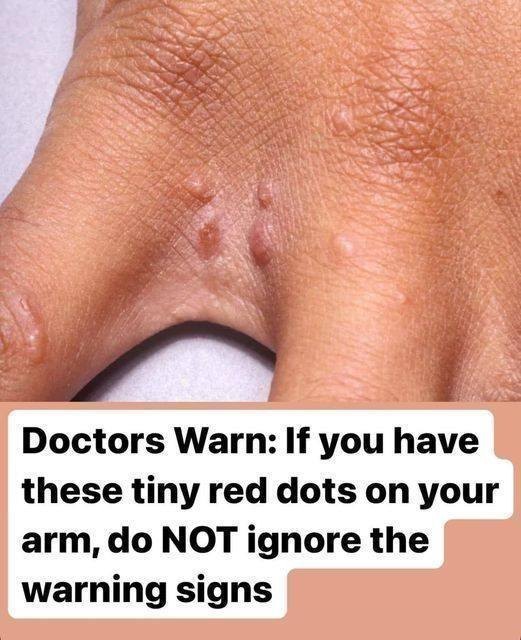If You Have These Tiny Red Dots on Your Arm, Do Not Ignore the Warning Signs
Tiny red spots appearing on your arm might seem harmless at first glance, but according to medical experts, they could signal an underlying condition that should not be ignored. One possible cause is scabies, a highly contagious skin infestation caused by microscopic mites that burrow into the skin and lay eggs.
Professor Kamila Hawthorne, Chair of the Royal College of General Practitioners, emphasizes that while scabies is generally not life-threatening, ignoring the symptoms can lead to more serious complications if left untreated. “Scabies itself is usually manageable,” she explains, “but when people delay treatment, they risk developing bacterial skin infections due to constant scratching and broken skin.”
The condition is most commonly spread through prolonged skin-to-skin contact, such as between family members, sexual partners, or those living in close quarters. It can also spread indirectly through shared towels, bedding, or clothing—particularly in environments like care homes, dormitories, or daycare centers.

What to Look For
Early signs of scabies often include:
-
Clusters of tiny red dots or bumps, especially on the arms, wrists, fingers, and waistline
-
Intense itching, particularly at night
-
Thin, irregular burrow lines on the skin (often in body folds)
-
Crusty, scaly patches in more severe cases
Because these symptoms can easily be mistaken for other skin conditions like eczema or allergies, scabies is frequently misdiagnosed in its early stages—leading to further spread.
Why Early Treatment Matters
Prompt diagnosis and treatment are key. Scabies is typically treated with prescription creams that kill the mites and their eggs. In some cases, oral medications may be prescribed, especially in more resistant or widespread infestations. Anyone who has been in close contact with the affected person should also be treated, even if they do not show symptoms yet.
“It’s important to treat not just the individual, but also their household or close contacts to prevent reinfection,” Professor Hawthorne notes.
If you notice persistent itching or a rash of small red bumps that doesn’t improve, don’t dismiss it. See a healthcare provider to rule out scabies or other skin issues. Addressing it early can help stop the spread, prevent complications, and bring much-needed relief.